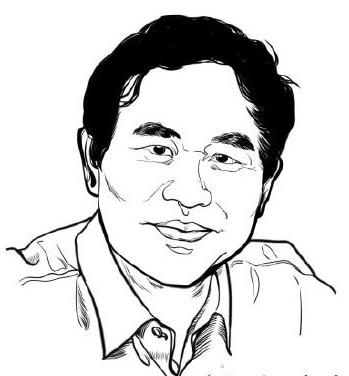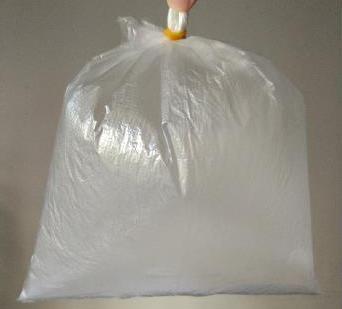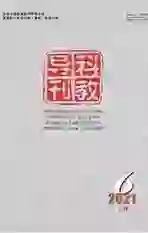别称错了空气的质量
2021-05-27张平柯


小學科学课堂,在充分考虑学生的可接受性的同时,必须确保传授知识的科学性。教师要掌握相对严谨的科学概念,并深刻地领会它们,才能够对这些科学概念在学生可理解的基础上进行通俗化、粗略化的处理,并确保这个处理的过程不出现科学性的错误,不对学生的后续学习造成负面影响。
案例:称空气的质量
课堂中,为进一步加深学生对空气有质量的认识,一位教师出示一个装有空气的塑料袋(如下图),提出问题:如何测量这袋空气的质量?
为了启发学生的思维,教师参考了上节课的活动,即:
取一个充好气的皮球和若干豆子,分别放在天平两端,使其平衡;
把皮球取下,用打气筒打入8筒空气,放回去后发现天平不平衡了;
这时,在放豆子的一端加入一些豆子,能让天平再次平衡。
在前一课的教学中,如果不考虑皮球继续打入8筒空气后产生的膨胀,用这个方法确实可以大致测出新打入的8筒空气的质量。但要注意的是,本节课中用这个方法却不能测出这袋空气的质量,道理很简单:
这袋空气是浸没在空气中的物体,周围的空气会给它一个向上的浮力,这个浮力的大小就等于它排开空气的重量;
如果这袋空气是常压的,或者说其密度和周围空气的密度一样,它排开空气的重量就是这袋空气的重量,这样称出来这袋空气的“重量”会等于零,当然“质量”也等于零了;
如果这个袋子里的空气压强大于一个大气压,则这袋空气的重量要大于它所受的浮力,这样称出来的“重量”实际是这袋空气的重量减去一袋常压空气的重量;
如果袋子内空气的压强不是远大于一个大气压,这样称出来“重量”就会明显小于这袋空气的实际重量,这样称出来的这袋空气质量就会远小于它的实际质量。
案例中教师是用塑料袋装空气的,袋内气压不可能太高,因此用这种方法完全不能够称量这袋空气的质量。
为了证明这一点大家可以做一个类似的实验,将一个没有盖的空矿泉水瓶放在自制的土天平上称(也可以用托盘天平甚至电子天平称),不需要称出具体的质量,只要让天平保持平衡就行,然后把这个矿泉水瓶压瘪,挤出里面的空气再称,会发现天平依然保持平衡,这瓶空气的“质量”为零!
这个错误,并不是每个小学科学教师都能够发现的,类似在此基础上的违背科学的“创新”实验也层出不穷,例如有教师运用现代技术手段,设计了一个“精确”测量空气质量的实验:用电子天平先测量一只没有充气的气球的质量,然后给这个气球充气,再放在电子天平上称量,认为两次称量的差值就是气球内空气的质量。
三年级的学生还没有学习空气浮力相关的知识,在这里用浮力的知识去解释实验现象不符合学生的认知能力。那么怎样处理这个问题呢?
很简单,果断删除测量一袋空气质量的活动,前一节课中,学生看到向皮球中打入8筒空气以后质量有变化,就足够建立空气有质量这一概念了。也可以把真空罩放在电子天平上,比较抽气前后的质量变化,就能得知空气有质量。
在上节课中,如果将皮球换为一个打入8筒空气后也不会形变的容器,就可以用天平比较准确地称量出这8筒空气的质量。
张平柯
湖南第一师范学院物理学教授
长沙师范学院特聘教授
湖南省青少年科技教育协会常务副理事长
Don't Misname the Quality of the Air
ZHANG Pingke
中图分类号:G424 文献标识码:A DOI:10.16400/j.cnki.kjdkx.2021.02.003
ZHANG Pingke
Professor of Physics, Hunan First Normal University
Distinguished Professor of Changsha Normal University
Executive Vice President of Hunan Youth Science and Technology Education Association
In the primary school science classroom, we must ensure the scientificity of imparting knowledge while fully considering the acceptability of students. Teachers should master relatively rigorous scientific concepts and deeply understand them, so that they can popularize and roughly deal with these scientific concepts on the basis of students' understanding, and ensure that there are no scientific mistakes in the process of dealing with them, and that they will not have a negative impact on students' follow-up study.
Case: Weigh the quality of the air
In class, in order to further deepen students' understanding of air quality, a teacher showed a plastic bag containing air (as shown in the figure below) and asked the question: how to measure the air quality of this bag?
In order to inspire students' thinking, the teacher referred to the activities of last class, namely:
Take an inflated ball and some beans and put them on both ends of the balance to balance them;
Take off the ball, use the air pump to inject 8 cylinders of air, put it back and find that the balance is unbalanced;
At this time, add some beans at the end of the bean to balance the balance again.
In the previous lesson, if the expansion of the ball after the ball continues to drive into 8 air tubes, the quality of the newly driven 8 air can be roughly measured by this method. But it should be noted that this method can not measure the air quality of this bag in this lesson. The reason is simple:
This bag of air is an object immersed in the air. The surrounding air will give it an upward buoyancy. The buoyancy is equal to the weight of the air;
If this bag of air is normal pressure, or its density is the same as that of the surrounding air, the weight of the air it displaces is the weight of this bag of air. In this way, the "weight" of this bag of air will be equal to zero, of course, the "mass" will be equal to zero;
If the pressure of the air in the bag is greater than one atmospheric pressure, the weight of the bag of air is greater than the buoyancy it bears. The "weight" is actually the weight of the bag of air minus the weight of a bag of atmospheric air;
If the pressure of air in the bag is not much greater than a atmospheric pressure, the weight will be significantly less than the actual weight of the air in the bag, so the air quality of the bag will be far less than its actual mass.
In the case, the teacher packed the air in a plastic bag, and the air pressure in the bag could not be too high, so this method could not be used to weigh the air quality.
In order to prove this, we can do a similar experiment. Put an empty mineral water bottle without a cover on a homemade earth balance (or use a tray balance or even an electronic balance). There is no need to weigh out the specific mass. Just let the balance keep balance. Then press the mineral water bottle, squeeze out the air and weigh it again. You will find that the balance is still in balance,the "mass" of this bottle of air is zero!
This error is not found by every primary school science teacher. Similar to the "innovation" experiments against science on this basis, there are endless experiments. For example, some teachers have designed an experiment to measure air quality accurately by using modern technology: measuring the mass of a balloon without inflation with electronic level, then filling the balloon, and then putting it on the electricity The difference between the two weighing is the air mass in the balloon.
The third grade students have not yet learned the knowledge about air buoyancy, so it is not in line with the students' cognitive ability to explain the experimental phenomenon with the knowledge of buoyancy. So how to deal with this problem?
It's very simple to decisively delete the activity of measuring the air quality of a bag. In the previous lesson, the students saw that the air quality changed after 8 cylinders were injected into the ball, which is enough to establish the concept of air quality. You can also put the vacuum cover on the electronic balance and compare the mass changes before and after the air pumping, then you can know the mass of the air.
In the last lesson, if the ball is replaced by a container which will not deform even after being driven into eight cylinders of air, the mass of the eight cylinders of air can be accurately weighed by a balance.
